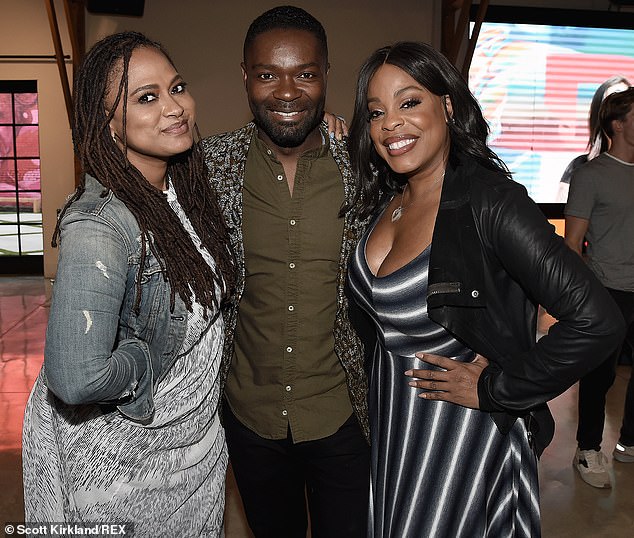You are using an out of date browser. It may not display this or other websites correctly.
You should upgrade or use an alternative browser.
You should upgrade or use an alternative browser.
Black Woman of the Day: Ava DuVernay - Award Winning Filmaker
- Thread starter playahaitian
- Start date
Darkseid Would Easily Beat Thanos According To New Gods Director Ava DuVernay
New Gods director Ava DuVernay has offered her opinion in the debate over who would win in a fight between Darkseid and Thanos. The common argument has been doing the rounds on Twitter lately, stoking predictably heated debates, patronizing comments and lots of angry nerd yelling.
Comparing characters of similar power types and skill sets and engaging in passionate and lengthy arguments over which of them would win in a fight is a tradition as old as comics themselves. With Darkseid properly debuting in 1971 and Thanos first appearing a mere two years later with a look, if not character, that was directly influenced by that of the New God – not to mention both of them being warlords or immense physical, militaristic and cosmic power – this particular discussion has been running on and off for over 45 years.
A tweet from Blerds Online stated that even with all six Infinity Stones Thanos would still not be a match for Darkseid, which Ava DuVernay retweeted along with simply commenting “a little louder for the people in the back,” a statement used to express someone’s wholehearted agreement with a statement and belief it should be more widely disseminated. The influx of comments and expressive gifs were overwhelmingly in agreement, showing how widespread the belief is.
As the debate was raging a few days ago, a Twitter Moments poll asked the internet at large their view on the issue. After the casting of over 33,000 votes and several hundred emphatic comments made, Darkseid emerged victorious with 66% of the final tally. The simple statement “Darkseid is,” requiring no further elaboration of qualification, does not exist for nothing.
The power level of any given character is always dependant on who is currently writing them, meaning that they often fluctuate with the needs of the story, but assessed objectively, DuVernay’s assertion of Blerds Online’s statement is difficult to argue with, as we ourselves laid out a couple of days ago. People unfamiliar with comics history and lore tend to get most of their information from adaptations and as Darkseid himself (or even any of his avatars) has yet to be seen in any of the live action DCEU movies, general audiences are still a little unfamiliar with him. When weighing their second- or third-hand understanding of a character somewhat nebulous to them against their perception of Thanos – a physically overpowering, megalomaniacal war chief quite literally holding the cosmic power of the universe in his hand – it’s understandable why they would have difficulty imagining someone at a greater power level. Of course, this perception leads to the challenge of DuVernay’s New Gods adequately portraying the Lord of Apocalypse at such a level of virtual omnipotence that audiences will be convinced of the lack of contest, but seeing as she is clearly of the opinion herself it’s an encouraging start.
- BY ANDREW MARSHALL
- – ON AUG 30, 2019
- IN MOVIE NEWS
New Gods director Ava DuVernay has offered her opinion in the debate over who would win in a fight between Darkseid and Thanos. The common argument has been doing the rounds on Twitter lately, stoking predictably heated debates, patronizing comments and lots of angry nerd yelling.
Comparing characters of similar power types and skill sets and engaging in passionate and lengthy arguments over which of them would win in a fight is a tradition as old as comics themselves. With Darkseid properly debuting in 1971 and Thanos first appearing a mere two years later with a look, if not character, that was directly influenced by that of the New God – not to mention both of them being warlords or immense physical, militaristic and cosmic power – this particular discussion has been running on and off for over 45 years.
A tweet from Blerds Online stated that even with all six Infinity Stones Thanos would still not be a match for Darkseid, which Ava DuVernay retweeted along with simply commenting “a little louder for the people in the back,” a statement used to express someone’s wholehearted agreement with a statement and belief it should be more widely disseminated. The influx of comments and expressive gifs were overwhelmingly in agreement, showing how widespread the belief is.
As the debate was raging a few days ago, a Twitter Moments poll asked the internet at large their view on the issue. After the casting of over 33,000 votes and several hundred emphatic comments made, Darkseid emerged victorious with 66% of the final tally. The simple statement “Darkseid is,” requiring no further elaboration of qualification, does not exist for nothing.
The power level of any given character is always dependant on who is currently writing them, meaning that they often fluctuate with the needs of the story, but assessed objectively, DuVernay’s assertion of Blerds Online’s statement is difficult to argue with, as we ourselves laid out a couple of days ago. People unfamiliar with comics history and lore tend to get most of their information from adaptations and as Darkseid himself (or even any of his avatars) has yet to be seen in any of the live action DCEU movies, general audiences are still a little unfamiliar with him. When weighing their second- or third-hand understanding of a character somewhat nebulous to them against their perception of Thanos – a physically overpowering, megalomaniacal war chief quite literally holding the cosmic power of the universe in his hand – it’s understandable why they would have difficulty imagining someone at a greater power level. Of course, this perception leads to the challenge of DuVernay’s New Gods adequately portraying the Lord of Apocalypse at such a level of virtual omnipotence that audiences will be convinced of the lack of contest, but seeing as she is clearly of the opinion herself it’s an encouraging start.
Darkseid Would Easily Beat Thanos According To New Gods Director Ava DuVernay
- BY ANDREW MARSHALL
- – ON AUG 30, 2019
- IN MOVIE NEWS
New Gods director Ava DuVernay has offered her opinion in the debate over who would win in a fight between Darkseid and Thanos. The common argument has been doing the rounds on Twitter lately, stoking predictably heated debates, patronizing comments and lots of angry nerd yelling.
Comparing characters of similar power types and skill sets and engaging in passionate and lengthy arguments over which of them would win in a fight is a tradition as old as comics themselves. With Darkseid properly debuting in 1971 and Thanos first appearing a mere two years later with a look, if not character, that was directly influenced by that of the New God – not to mention both of them being warlords or immense physical, militaristic and cosmic power – this particular discussion has been running on and off for over 45 years.
A tweet from Blerds Online stated that even with all six Infinity Stones Thanos would still not be a match for Darkseid, which Ava DuVernay retweeted along with simply commenting “a little louder for the people in the back,” a statement used to express someone’s wholehearted agreement with a statement and belief it should be more widely disseminated. The influx of comments and expressive gifs were overwhelmingly in agreement, showing how widespread the belief is.
As the debate was raging a few days ago, a Twitter Moments poll asked the internet at large their view on the issue. After the casting of over 33,000 votes and several hundred emphatic comments made, Darkseid emerged victorious with 66% of the final tally. The simple statement “Darkseid is,” requiring no further elaboration of qualification, does not exist for nothing.
The power level of any given character is always dependant on who is currently writing them, meaning that they often fluctuate with the needs of the story, but assessed objectively, DuVernay’s assertion of Blerds Online’s statement is difficult to argue with, as we ourselves laid out a couple of days ago. People unfamiliar with comics history and lore tend to get most of their information from adaptations and as Darkseid himself (or even any of his avatars) has yet to be seen in any of the live action DCEU movies, general audiences are still a little unfamiliar with him. When weighing their second- or third-hand understanding of a character somewhat nebulous to them against their perception of Thanos – a physically overpowering, megalomaniacal war chief quite literally holding the cosmic power of the universe in his hand – it’s understandable why they would have difficulty imagining someone at a greater power level. Of course, this perception leads to the challenge of DuVernay’s New Gods adequately portraying the Lord of Apocalypse at such a level of virtual omnipotence that audiences will be convinced of the lack of contest, but seeing as she is clearly of the opinion herself it’s an encouraging start.
First of all. Don't start talkin shit until DC can make a successful flic with Darkseid in it. Personally I think DC setting her up to fail. She passed on Black Panther to do New Gods?????????????? Jury's out for me. I hope it's good but it's fuckin DC.
Ava is great. DC is bottom of the barrel shit.
I'm with you, DC has yet to capture my attention when it comes to live action movies. Their animation is something different. They have to step their game up big time for me when it comes to movies. If she can pull it off, that'll be a major feather in her cap.First of all. Don't start talkin shit until DC can make a successful flic with Darkseid in it. Personally I think DC setting her up to fail. She passed on Black Panther to do New Gods?????????????? Jury's out for me. I hope it's good but it's fuckin DC.
Ava is great. DC is bottom of the barrel shit.
They better do New Gods as the official restart of the DCEU..
They better do New Gods as the official restart of the DCEU..
I think thats a wise suggestion
How Ava DuVernay Made When They See Us, the Year’s Best Miniseries
By Matt Zoller Seitz@mattzollerseitz
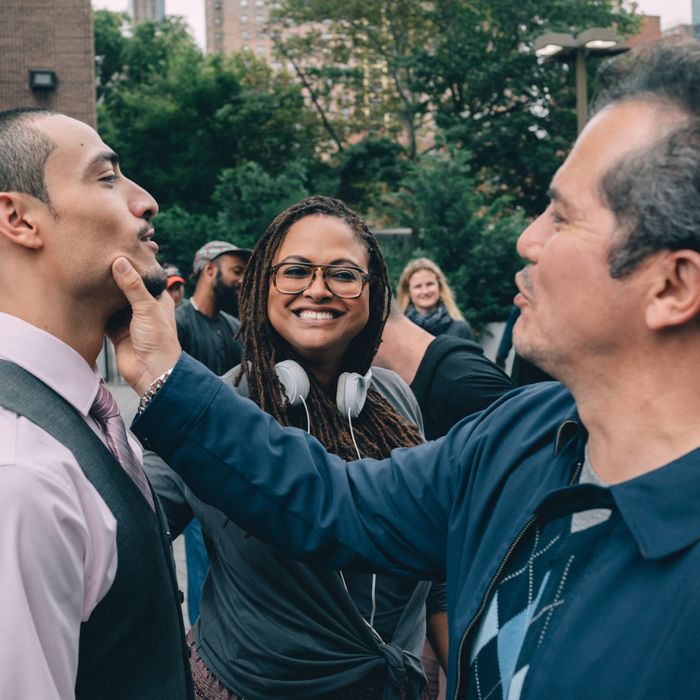
Ava DuVernay on set with When They See Us stars Freddy Miyares and John Leguizamo. Photo: Atsushi Nishijima/Netflix
Ava DuVernay’s miniseries When They See Us, about the wrongful imprisonment of five teenagers accused of assaulting a jogger in Central Park, is up for multiple Emmy awards this Sunday, including miniseries, direction, writing, actor, and (twice!) best actress. After choosing it as the best miniseries on TV earlier this year, we asked DuVernay to talk to us about the direction, writing, and overall conception of the project. When They See Us is thematically and politically consistent with her earlier work in both fiction (Selma, Queen Sugar) and nonfiction (13th), in that it focuses on racial and class inequities and the idea of prison as the continuation of slavery by other means. But it also represents a level-up in artistry and a culmination of everything she’s done to date, drawing from ’70s New York cinema, mid-20th-century photojournalism, historical research, Hollywood-scale epic sweep, and grounded human drama.
DuVernay is a student of cinema history as well as an influential filmmaker and social commentator, which is one reason why it’s always a pleasure to talk to her about cinema, television, and American history.
How did you approach the cinematography, having a large cast of actors of color with a wide variation in skin tones?
This story was a chance for me to continue exploring how to capture skin tone with actors of color in dark spaces. I was really pushing myself in terms of the color grade. It was the work with Mitch Paulson [supervising digital colorist on several DuVernay projects, including A Wrinkle in Time] that was new, the furthering of playing with the image and seeing what it can do. We were asking, “How far can you push an image before it breaks?”
the archival video. Why?
If I know exactly what the place looked like because I have video footage, then why would I not make it look like that? That footage is infamous, particularly in the black community and the justice community. It would’ve felt weird to take some artistic license with footage like that — something that we’ve seen and that we knew to be true. So down to the soda can on the desk of Korey Wise, down to the angle that captures the refrigerator in the back, we wanted to get as close to the real thing as we could to honor what really happened in those rooms. It just felt like the right thing to do.
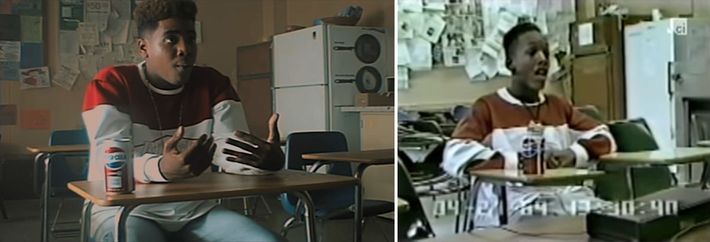
Also I was fascinated by those frames. There’s a point where Kevin Richardson’s coercion is being taped, and there’s a coatrack behind him with a black coat on it. As I watched the real tape of the real boy, whenever he would swivel in his chair, this black coat would come to life and move like a man standing behind him. It was, artistically, for lack of a lighter term, fascinating to look at old footage and ask “Why is this so compelling?”
Why do you think those ordinary frames are compelling?Because there is a great tragedy happening within those frames. Think about the environment being so ordinary. The flyers in the background for D.A.R.E, the stuff telling you “Don’t drink and drive.” And meanwhile, this injustice is happening.
Do you think the way interrogations and confessions are videotaped has an influence on how the public sees the individuals in those frames?
Yeah, absolutely. We know the image has been used as a tool for bias since the birth of the image.
It was true with drawing and painting; the introduction of photography was supposed to change all that, because, for the first time, it was possible to push a button and record reality. But that’s not what happened. No, it isn’t. Frederick Douglass, the most photographed man of his century, understood the importance of the image in the sad exercise of having to humanize oneself. Everyone has always understood the importance of the image and the importance of being in control of the image, whether it’s the white people who murdered black people by lynching and then took photographs and put them on postcards and mailed them around the country as souvenirs through the U.S. postal system, or the photographs that black people took of themselves fairly early in the age of photography, when it was considered very rare for people like that to even have access to those sorts of tools.
The importance of controlling the image answers the question of why there are very few black films from that time. The hostage-taking of the image is something that happened because of a lack of access to tools, because of a lack of access to exhibition and distribution, because of a lack of access to the tools that captured who we were, and because of how images were distributed falsely with a different and untrue narrative. Every time a filmmaker of color makes a film, it is a rescue effort. It is an act of resistance and defiance to use tools that were kept away from us, tools that were used to harm us for so long. When I get to a film like this, where there are so very many black people in it, every frame becomes a vitally important demonstration of freedom.
What kind of freedom?Freedom to be seen, to show yourself as you are without contrivance and without someone else’s truth being put on top of yours.
I noticed that you keep the camera far back a lot in this series. You don’t go in close unless you really, really feel like you need to. Why is that?It becomes melodramatic. You don’t want to use the close-up all the time, because it loses its power. We go close up on Kevin Richardson’s face in episode one, when he’s telling the lie. When you see him constructing the lie, it was a lot of “You sure you don’t want to cut?” I’m like, “Yup, I’m super-sure.” You got to save his close-up for that moment in the cell with all the boys, where he says, “I lied on you.”
He’s struggling to say the one thing that no prosecutor, no one else said: I’ve made a mistake. I was wrong. He was the first one to say, I did something that I know is not right, that my mother told me was not right to do. And it was in that moment that they decided, all of them, that they would never lie again. And they never did. How do you express that moment? I remember saying that had to pop out, but I don’t know if it was super-conscious. It’s more intuitive. Like, I’m going to need this [close-up] as a big weapon, so let’s save it.
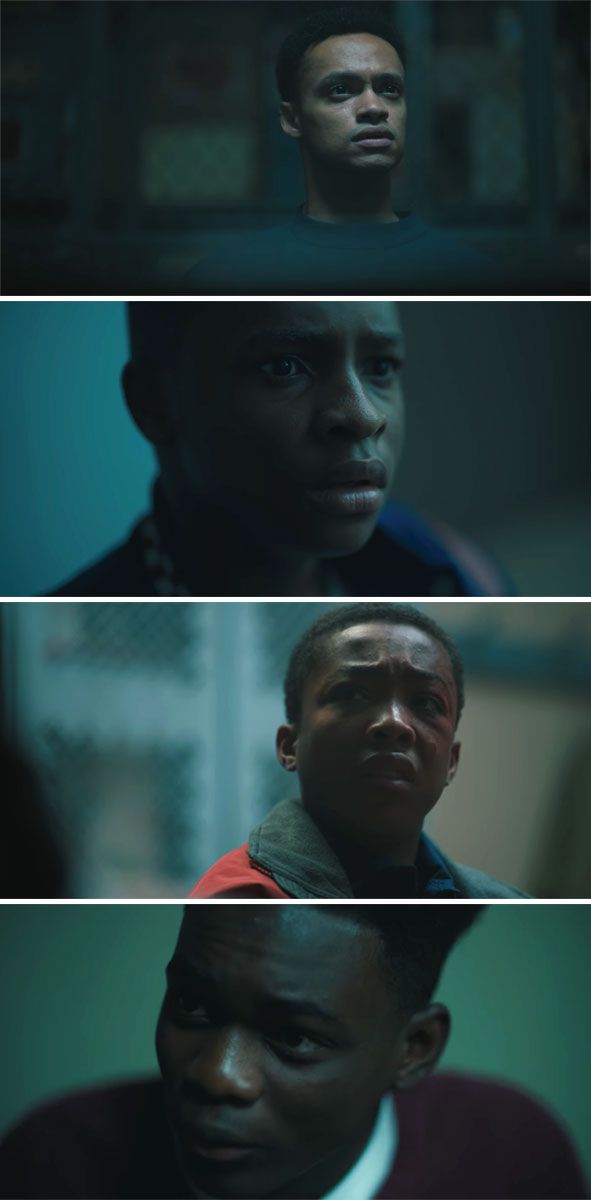
Did any films or schools of filmmaking inspire you, particularly when you were shooting the faces of child actors?We looked at a lot of photographs. We looked at a lot of Roy [DeCarava], we looked at a lot of [Gordon] Parks. We looked at a lot of Vivian Maier. I watched Battle of Algiers a lot because I wanted that very naturalistic, “Is this real?” kind of feel. But I can’t say we did a lot of conscious borrowing.
Is it fair to say you were thinking about documentary and photojournalism?Yeah, but I wasn’t trying to make it look like it was news. I know we’re constructing a cinematic image. Intuitively, we knew what we wanted to do, so I can’t say honestly that it was like, Yeah, this is going to be like documentary and news footage.
I have questions about a couple of the music choices. The first is the use of “Fight the Power.”That was a debated one.
The year 1989 is right there in the lyrics, so there’s a practical reason for using it. But it’s also, of course, the theme to Do the Right Thing. Out of all the songs you could have chosen, you chose that. Why?
Well, that song is formative for me personally. It was a big, big song for me. That was the summer of me going into my senior year.
It also gives you an immediate sense of place. If you loved hip-hop, you loved that song. If you were around during that time, you know that song was going to put you right there. There was no heavy lifting that needed to be done. I’m consciously recalling Spike’s work and Public Enemy’s work in that moment and saying, You know what this is; this is where you are. And the lyrics also fit so beautifully into the fight that’s ahead. It’s a tribute but also a testament to the power of that work.
The other one I want to ask about is “Moon River.” Unless I’m missing one, you use it twice, right? But it’s not the Audrey Hepburn version from Breakfast at Tiffany’s. Why that song, and why that version?
You’re the first person to ask me about it.
That’s why I get the medium bucks.That song has always been a heartbreaker for me. I did not know it in the context of the Audrey Hepburn [movie], but that’s a meaningful song to me. There’s a mournful quality. There’s a longing in the song. It is like an elegy. It speaks to a desire for something more that most people will never get. It’s all the things that are just out of reach. And so that song applied to the black image is something I’ve always wanted to do. I played with putting it in Middle of Nowhere, putting it in Selma, and I’m glad I wrote that part into episode four. It came from a story I heard from Korey Wise. People do all kinds of things in prison, and he told me about a guy who would sing. It always stuck with me. The fact that that man sings that song — in this demonized forest where the people ensnared in the system can’t even hear it or see the beauty in it — this is meaningful to me.
The artist at the end is Frank Ocean. He’s meaningful in the culture for a lot of reasons, but it all seems to be a real symmetry. A voice of a black man creates a certain kind of full circle–ness to thinking about what is within the reach of some citizens and what is not. Who gets to sing that song? Who doesn’t? Who can really hear that song, and who can’t and why? I’m proud of those moments.
You have two sets of actors for each of the main boys, except for Jharrel Jerome. Why did you have him play both incarnations of Korey?
Because he has the physicality to do both. A lot of the boys that we cast, they would not be able to pass as men. The men that we cast, none of them could play boys ’cause they look like full-grown men. It was only Jharrel who was able to do both. When we shot him, he was 20, so he looked very close to a teenager, but with the full-grown beard he can literally pass for 30.
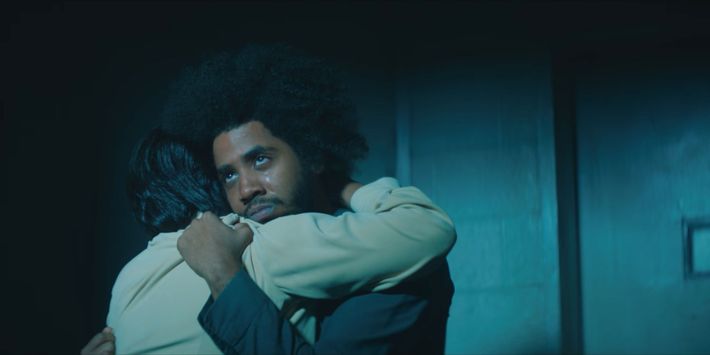
The structure of this entire story is fascinating to me. In the first two episodes, you concentrate on the arrest, the trial, and how these kids get into the system, and then you go to the immediate aftermath of the release and the difficulty of reintegration for three of them. Then you concentrate on just Korey. How did that come about?It really came from Korey Wise. When I first sat down with him, he said, “I’m happy that you’re telling my story, but you should know we’re not the Central Park Five. We’re four plus one.” He was adamant and assertive about that, that they did not all experience the same thing. From the minute he told me that, I knew I needed to find a way to honor that in the story. Before I even opened a writers’ room or hired any writers, I knew he would have a stand-alone episode and that would be the finale.
Obviously, you tell a lot of different stories, but you keep coming back to the misapplication of criminal justice to people of color. What about this story brought new understanding to you as an artist?The sprawling nature of this story forces the storyteller to have to understand all of the different parts of the criminal-justice system in real time, so whereas I had studied those things from a historical framework in order to make 13th, this film allowed me to really interrogate it from a personal and emotional place. All of the levers of the criminal-justice system that I talk about in 13th, I really began to feel them on When They See Us. When we talk about bail, when we talk about debtors’ prison, when we talk about solitary confinement, when we talk about police aggression, when we talk about the bias in the criminal-justice system, it was digging into each of those pieces that I knew theoretically — that I knew politically, historically, culturally — and getting on a level where my heartbeat was beating with the people going through it.
I’d never gone deep inside of the prison and dealt with the whole trajectory of criminalization. The sweeping nature of the case is that it touches almost every aspect of the criminal-justice system. It allowed us to share all of that emotionality that’s bumping up against the hard walls of the system and really open up these spaces in a way that I really longed to do, hadn’t seen, and wanted to have seen.
https://www.vulture.com/2019/09/ava-duvernay-when-they-see-us-netflix.html
By Matt Zoller Seitz@mattzollerseitz
Ava DuVernay on set with When They See Us stars Freddy Miyares and John Leguizamo. Photo: Atsushi Nishijima/Netflix
Ava DuVernay’s miniseries When They See Us, about the wrongful imprisonment of five teenagers accused of assaulting a jogger in Central Park, is up for multiple Emmy awards this Sunday, including miniseries, direction, writing, actor, and (twice!) best actress. After choosing it as the best miniseries on TV earlier this year, we asked DuVernay to talk to us about the direction, writing, and overall conception of the project. When They See Us is thematically and politically consistent with her earlier work in both fiction (Selma, Queen Sugar) and nonfiction (13th), in that it focuses on racial and class inequities and the idea of prison as the continuation of slavery by other means. But it also represents a level-up in artistry and a culmination of everything she’s done to date, drawing from ’70s New York cinema, mid-20th-century photojournalism, historical research, Hollywood-scale epic sweep, and grounded human drama.
DuVernay is a student of cinema history as well as an influential filmmaker and social commentator, which is one reason why it’s always a pleasure to talk to her about cinema, television, and American history.
How did you approach the cinematography, having a large cast of actors of color with a wide variation in skin tones?
This story was a chance for me to continue exploring how to capture skin tone with actors of color in dark spaces. I was really pushing myself in terms of the color grade. It was the work with Mitch Paulson [supervising digital colorist on several DuVernay projects, including A Wrinkle in Time] that was new, the furthering of playing with the image and seeing what it can do. We were asking, “How far can you push an image before it breaks?”
the archival video. Why?
If I know exactly what the place looked like because I have video footage, then why would I not make it look like that? That footage is infamous, particularly in the black community and the justice community. It would’ve felt weird to take some artistic license with footage like that — something that we’ve seen and that we knew to be true. So down to the soda can on the desk of Korey Wise, down to the angle that captures the refrigerator in the back, we wanted to get as close to the real thing as we could to honor what really happened in those rooms. It just felt like the right thing to do.
Also I was fascinated by those frames. There’s a point where Kevin Richardson’s coercion is being taped, and there’s a coatrack behind him with a black coat on it. As I watched the real tape of the real boy, whenever he would swivel in his chair, this black coat would come to life and move like a man standing behind him. It was, artistically, for lack of a lighter term, fascinating to look at old footage and ask “Why is this so compelling?”
Why do you think those ordinary frames are compelling?Because there is a great tragedy happening within those frames. Think about the environment being so ordinary. The flyers in the background for D.A.R.E, the stuff telling you “Don’t drink and drive.” And meanwhile, this injustice is happening.
Do you think the way interrogations and confessions are videotaped has an influence on how the public sees the individuals in those frames?
Yeah, absolutely. We know the image has been used as a tool for bias since the birth of the image.
It was true with drawing and painting; the introduction of photography was supposed to change all that, because, for the first time, it was possible to push a button and record reality. But that’s not what happened. No, it isn’t. Frederick Douglass, the most photographed man of his century, understood the importance of the image in the sad exercise of having to humanize oneself. Everyone has always understood the importance of the image and the importance of being in control of the image, whether it’s the white people who murdered black people by lynching and then took photographs and put them on postcards and mailed them around the country as souvenirs through the U.S. postal system, or the photographs that black people took of themselves fairly early in the age of photography, when it was considered very rare for people like that to even have access to those sorts of tools.
The importance of controlling the image answers the question of why there are very few black films from that time. The hostage-taking of the image is something that happened because of a lack of access to tools, because of a lack of access to exhibition and distribution, because of a lack of access to the tools that captured who we were, and because of how images were distributed falsely with a different and untrue narrative. Every time a filmmaker of color makes a film, it is a rescue effort. It is an act of resistance and defiance to use tools that were kept away from us, tools that were used to harm us for so long. When I get to a film like this, where there are so very many black people in it, every frame becomes a vitally important demonstration of freedom.
What kind of freedom?Freedom to be seen, to show yourself as you are without contrivance and without someone else’s truth being put on top of yours.
I noticed that you keep the camera far back a lot in this series. You don’t go in close unless you really, really feel like you need to. Why is that?It becomes melodramatic. You don’t want to use the close-up all the time, because it loses its power. We go close up on Kevin Richardson’s face in episode one, when he’s telling the lie. When you see him constructing the lie, it was a lot of “You sure you don’t want to cut?” I’m like, “Yup, I’m super-sure.” You got to save his close-up for that moment in the cell with all the boys, where he says, “I lied on you.”
He’s struggling to say the one thing that no prosecutor, no one else said: I’ve made a mistake. I was wrong. He was the first one to say, I did something that I know is not right, that my mother told me was not right to do. And it was in that moment that they decided, all of them, that they would never lie again. And they never did. How do you express that moment? I remember saying that had to pop out, but I don’t know if it was super-conscious. It’s more intuitive. Like, I’m going to need this [close-up] as a big weapon, so let’s save it.
Did any films or schools of filmmaking inspire you, particularly when you were shooting the faces of child actors?We looked at a lot of photographs. We looked at a lot of Roy [DeCarava], we looked at a lot of [Gordon] Parks. We looked at a lot of Vivian Maier. I watched Battle of Algiers a lot because I wanted that very naturalistic, “Is this real?” kind of feel. But I can’t say we did a lot of conscious borrowing.
Is it fair to say you were thinking about documentary and photojournalism?Yeah, but I wasn’t trying to make it look like it was news. I know we’re constructing a cinematic image. Intuitively, we knew what we wanted to do, so I can’t say honestly that it was like, Yeah, this is going to be like documentary and news footage.
I have questions about a couple of the music choices. The first is the use of “Fight the Power.”That was a debated one.
The year 1989 is right there in the lyrics, so there’s a practical reason for using it. But it’s also, of course, the theme to Do the Right Thing. Out of all the songs you could have chosen, you chose that. Why?
Well, that song is formative for me personally. It was a big, big song for me. That was the summer of me going into my senior year.
It also gives you an immediate sense of place. If you loved hip-hop, you loved that song. If you were around during that time, you know that song was going to put you right there. There was no heavy lifting that needed to be done. I’m consciously recalling Spike’s work and Public Enemy’s work in that moment and saying, You know what this is; this is where you are. And the lyrics also fit so beautifully into the fight that’s ahead. It’s a tribute but also a testament to the power of that work.
The other one I want to ask about is “Moon River.” Unless I’m missing one, you use it twice, right? But it’s not the Audrey Hepburn version from Breakfast at Tiffany’s. Why that song, and why that version?
You’re the first person to ask me about it.
That’s why I get the medium bucks.That song has always been a heartbreaker for me. I did not know it in the context of the Audrey Hepburn [movie], but that’s a meaningful song to me. There’s a mournful quality. There’s a longing in the song. It is like an elegy. It speaks to a desire for something more that most people will never get. It’s all the things that are just out of reach. And so that song applied to the black image is something I’ve always wanted to do. I played with putting it in Middle of Nowhere, putting it in Selma, and I’m glad I wrote that part into episode four. It came from a story I heard from Korey Wise. People do all kinds of things in prison, and he told me about a guy who would sing. It always stuck with me. The fact that that man sings that song — in this demonized forest where the people ensnared in the system can’t even hear it or see the beauty in it — this is meaningful to me.
The artist at the end is Frank Ocean. He’s meaningful in the culture for a lot of reasons, but it all seems to be a real symmetry. A voice of a black man creates a certain kind of full circle–ness to thinking about what is within the reach of some citizens and what is not. Who gets to sing that song? Who doesn’t? Who can really hear that song, and who can’t and why? I’m proud of those moments.
You have two sets of actors for each of the main boys, except for Jharrel Jerome. Why did you have him play both incarnations of Korey?
Because he has the physicality to do both. A lot of the boys that we cast, they would not be able to pass as men. The men that we cast, none of them could play boys ’cause they look like full-grown men. It was only Jharrel who was able to do both. When we shot him, he was 20, so he looked very close to a teenager, but with the full-grown beard he can literally pass for 30.
The structure of this entire story is fascinating to me. In the first two episodes, you concentrate on the arrest, the trial, and how these kids get into the system, and then you go to the immediate aftermath of the release and the difficulty of reintegration for three of them. Then you concentrate on just Korey. How did that come about?It really came from Korey Wise. When I first sat down with him, he said, “I’m happy that you’re telling my story, but you should know we’re not the Central Park Five. We’re four plus one.” He was adamant and assertive about that, that they did not all experience the same thing. From the minute he told me that, I knew I needed to find a way to honor that in the story. Before I even opened a writers’ room or hired any writers, I knew he would have a stand-alone episode and that would be the finale.
Obviously, you tell a lot of different stories, but you keep coming back to the misapplication of criminal justice to people of color. What about this story brought new understanding to you as an artist?The sprawling nature of this story forces the storyteller to have to understand all of the different parts of the criminal-justice system in real time, so whereas I had studied those things from a historical framework in order to make 13th, this film allowed me to really interrogate it from a personal and emotional place. All of the levers of the criminal-justice system that I talk about in 13th, I really began to feel them on When They See Us. When we talk about bail, when we talk about debtors’ prison, when we talk about solitary confinement, when we talk about police aggression, when we talk about the bias in the criminal-justice system, it was digging into each of those pieces that I knew theoretically — that I knew politically, historically, culturally — and getting on a level where my heartbeat was beating with the people going through it.
I’d never gone deep inside of the prison and dealt with the whole trajectory of criminalization. The sweeping nature of the case is that it touches almost every aspect of the criminal-justice system. It allowed us to share all of that emotionality that’s bumping up against the hard walls of the system and really open up these spaces in a way that I really longed to do, hadn’t seen, and wanted to have seen.
https://www.vulture.com/2019/09/ava-duvernay-when-they-see-us-netflix.html
How Ava DuVernay Made When They See Us, the Year’s Best Miniseries
By Matt Zoller Seitz@mattzollerseitz

Ava DuVernay on set with When They See Us stars Freddy Miyares and John Leguizamo. Photo: Atsushi Nishijima/Netflix
Ava DuVernay’s miniseries When They See Us, about the wrongful imprisonment of five teenagers accused of assaulting a jogger in Central Park, is up for multiple Emmy awards this Sunday, including miniseries, direction, writing, actor, and (twice!) best actress. After choosing it as the best miniseries on TV earlier this year, we asked DuVernay to talk to us about the direction, writing, and overall conception of the project. When They See Us is thematically and politically consistent with her earlier work in both fiction (Selma, Queen Sugar) and nonfiction (13th), in that it focuses on racial and class inequities and the idea of prison as the continuation of slavery by other means. But it also represents a level-up in artistry and a culmination of everything she’s done to date, drawing from ’70s New York cinema, mid-20th-century photojournalism, historical research, Hollywood-scale epic sweep, and grounded human drama.
DuVernay is a student of cinema history as well as an influential filmmaker and social commentator, which is one reason why it’s always a pleasure to talk to her about cinema, television, and American history.
How did you approach the cinematography, having a large cast of actors of color with a wide variation in skin tones?
This story was a chance for me to continue exploring how to capture skin tone with actors of color in dark spaces. I was really pushing myself in terms of the color grade. It was the work with Mitch Paulson [supervising digital colorist on several DuVernay projects, including A Wrinkle in Time] that was new, the furthering of playing with the image and seeing what it can do. We were asking, “How far can you push an image before it breaks?”
the archival video. Why?
If I know exactly what the place looked like because I have video footage, then why would I not make it look like that? That footage is infamous, particularly in the black community and the justice community. It would’ve felt weird to take some artistic license with footage like that — something that we’ve seen and that we knew to be true. So down to the soda can on the desk of Korey Wise, down to the angle that captures the refrigerator in the back, we wanted to get as close to the real thing as we could to honor what really happened in those rooms. It just felt like the right thing to do.

Also I was fascinated by those frames. There’s a point where Kevin Richardson’s coercion is being taped, and there’s a coatrack behind him with a black coat on it. As I watched the real tape of the real boy, whenever he would swivel in his chair, this black coat would come to life and move like a man standing behind him. It was, artistically, for lack of a lighter term, fascinating to look at old footage and ask “Why is this so compelling?”
Why do you think those ordinary frames are compelling?Because there is a great tragedy happening within those frames. Think about the environment being so ordinary. The flyers in the background for D.A.R.E, the stuff telling you “Don’t drink and drive.” And meanwhile, this injustice is happening.
Do you think the way interrogations and confessions are videotaped has an influence on how the public sees the individuals in those frames?
Yeah, absolutely. We know the image has been used as a tool for bias since the birth of the image.
It was true with drawing and painting; the introduction of photography was supposed to change all that, because, for the first time, it was possible to push a button and record reality. But that’s not what happened. No, it isn’t. Frederick Douglass, the most photographed man of his century, understood the importance of the image in the sad exercise of having to humanize oneself. Everyone has always understood the importance of the image and the importance of being in control of the image, whether it’s the white people who murdered black people by lynching and then took photographs and put them on postcards and mailed them around the country as souvenirs through the U.S. postal system, or the photographs that black people took of themselves fairly early in the age of photography, when it was considered very rare for people like that to even have access to those sorts of tools.
The importance of controlling the image answers the question of why there are very few black films from that time. The hostage-taking of the image is something that happened because of a lack of access to tools, because of a lack of access to exhibition and distribution, because of a lack of access to the tools that captured who we were, and because of how images were distributed falsely with a different and untrue narrative. Every time a filmmaker of color makes a film, it is a rescue effort. It is an act of resistance and defiance to use tools that were kept away from us, tools that were used to harm us for so long. When I get to a film like this, where there are so very many black people in it, every frame becomes a vitally important demonstration of freedom.
What kind of freedom?Freedom to be seen, to show yourself as you are without contrivance and without someone else’s truth being put on top of yours.
I noticed that you keep the camera far back a lot in this series. You don’t go in close unless you really, really feel like you need to. Why is that?It becomes melodramatic. You don’t want to use the close-up all the time, because it loses its power. We go close up on Kevin Richardson’s face in episode one, when he’s telling the lie. When you see him constructing the lie, it was a lot of “You sure you don’t want to cut?” I’m like, “Yup, I’m super-sure.” You got to save his close-up for that moment in the cell with all the boys, where he says, “I lied on you.”
He’s struggling to say the one thing that no prosecutor, no one else said: I’ve made a mistake. I was wrong. He was the first one to say, I did something that I know is not right, that my mother told me was not right to do. And it was in that moment that they decided, all of them, that they would never lie again. And they never did. How do you express that moment? I remember saying that had to pop out, but I don’t know if it was super-conscious. It’s more intuitive. Like, I’m going to need this [close-up] as a big weapon, so let’s save it.

Did any films or schools of filmmaking inspire you, particularly when you were shooting the faces of child actors?We looked at a lot of photographs. We looked at a lot of Roy [DeCarava], we looked at a lot of [Gordon] Parks. We looked at a lot of Vivian Maier. I watched Battle of Algiers a lot because I wanted that very naturalistic, “Is this real?” kind of feel. But I can’t say we did a lot of conscious borrowing.
Is it fair to say you were thinking about documentary and photojournalism?Yeah, but I wasn’t trying to make it look like it was news. I know we’re constructing a cinematic image. Intuitively, we knew what we wanted to do, so I can’t say honestly that it was like, Yeah, this is going to be like documentary and news footage.
I have questions about a couple of the music choices. The first is the use of “Fight the Power.”That was a debated one.
The year 1989 is right there in the lyrics, so there’s a practical reason for using it. But it’s also, of course, the theme to Do the Right Thing. Out of all the songs you could have chosen, you chose that. Why?
Well, that song is formative for me personally. It was a big, big song for me. That was the summer of me going into my senior year.
It also gives you an immediate sense of place. If you loved hip-hop, you loved that song. If you were around during that time, you know that song was going to put you right there. There was no heavy lifting that needed to be done. I’m consciously recalling Spike’s work and Public Enemy’s work in that moment and saying, You know what this is; this is where you are. And the lyrics also fit so beautifully into the fight that’s ahead. It’s a tribute but also a testament to the power of that work.
The other one I want to ask about is “Moon River.” Unless I’m missing one, you use it twice, right? But it’s not the Audrey Hepburn version from Breakfast at Tiffany’s. Why that song, and why that version?
You’re the first person to ask me about it.
That’s why I get the medium bucks.That song has always been a heartbreaker for me. I did not know it in the context of the Audrey Hepburn [movie], but that’s a meaningful song to me. There’s a mournful quality. There’s a longing in the song. It is like an elegy. It speaks to a desire for something more that most people will never get. It’s all the things that are just out of reach. And so that song applied to the black image is something I’ve always wanted to do. I played with putting it in Middle of Nowhere, putting it in Selma, and I’m glad I wrote that part into episode four. It came from a story I heard from Korey Wise. People do all kinds of things in prison, and he told me about a guy who would sing. It always stuck with me. The fact that that man sings that song — in this demonized forest where the people ensnared in the system can’t even hear it or see the beauty in it — this is meaningful to me.
The artist at the end is Frank Ocean. He’s meaningful in the culture for a lot of reasons, but it all seems to be a real symmetry. A voice of a black man creates a certain kind of full circle–ness to thinking about what is within the reach of some citizens and what is not. Who gets to sing that song? Who doesn’t? Who can really hear that song, and who can’t and why? I’m proud of those moments.
You have two sets of actors for each of the main boys, except for Jharrel Jerome. Why did you have him play both incarnations of Korey?
Because he has the physicality to do both. A lot of the boys that we cast, they would not be able to pass as men. The men that we cast, none of them could play boys ’cause they look like full-grown men. It was only Jharrel who was able to do both. When we shot him, he was 20, so he looked very close to a teenager, but with the full-grown beard he can literally pass for 30.

The structure of this entire story is fascinating to me. In the first two episodes, you concentrate on the arrest, the trial, and how these kids get into the system, and then you go to the immediate aftermath of the release and the difficulty of reintegration for three of them. Then you concentrate on just Korey. How did that come about?It really came from Korey Wise. When I first sat down with him, he said, “I’m happy that you’re telling my story, but you should know we’re not the Central Park Five. We’re four plus one.” He was adamant and assertive about that, that they did not all experience the same thing. From the minute he told me that, I knew I needed to find a way to honor that in the story. Before I even opened a writers’ room or hired any writers, I knew he would have a stand-alone episode and that would be the finale.
Obviously, you tell a lot of different stories, but you keep coming back to the misapplication of criminal justice to people of color. What about this story brought new understanding to you as an artist?The sprawling nature of this story forces the storyteller to have to understand all of the different parts of the criminal-justice system in real time, so whereas I had studied those things from a historical framework in order to make 13th, this film allowed me to really interrogate it from a personal and emotional place. All of the levers of the criminal-justice system that I talk about in 13th, I really began to feel them on When They See Us. When we talk about bail, when we talk about debtors’ prison, when we talk about solitary confinement, when we talk about police aggression, when we talk about the bias in the criminal-justice system, it was digging into each of those pieces that I knew theoretically — that I knew politically, historically, culturally — and getting on a level where my heartbeat was beating with the people going through it.
I’d never gone deep inside of the prison and dealt with the whole trajectory of criminalization. The sweeping nature of the case is that it touches almost every aspect of the criminal-justice system. It allowed us to share all of that emotionality that’s bumping up against the hard walls of the system and really open up these spaces in a way that I really longed to do, hadn’t seen, and wanted to have seen.
https://www.vulture.com/2019/09/ava-duvernay-when-they-see-us-netflix.html
By Matt Zoller Seitz@mattzollerseitz
Ava DuVernay on set with When They See Us stars Freddy Miyares and John Leguizamo. Photo: Atsushi Nishijima/Netflix
Ava DuVernay’s miniseries When They See Us, about the wrongful imprisonment of five teenagers accused of assaulting a jogger in Central Park, is up for multiple Emmy awards this Sunday, including miniseries, direction, writing, actor, and (twice!) best actress. After choosing it as the best miniseries on TV earlier this year, we asked DuVernay to talk to us about the direction, writing, and overall conception of the project. When They See Us is thematically and politically consistent with her earlier work in both fiction (Selma, Queen Sugar) and nonfiction (13th), in that it focuses on racial and class inequities and the idea of prison as the continuation of slavery by other means. But it also represents a level-up in artistry and a culmination of everything she’s done to date, drawing from ’70s New York cinema, mid-20th-century photojournalism, historical research, Hollywood-scale epic sweep, and grounded human drama.
DuVernay is a student of cinema history as well as an influential filmmaker and social commentator, which is one reason why it’s always a pleasure to talk to her about cinema, television, and American history.
How did you approach the cinematography, having a large cast of actors of color with a wide variation in skin tones?
This story was a chance for me to continue exploring how to capture skin tone with actors of color in dark spaces. I was really pushing myself in terms of the color grade. It was the work with Mitch Paulson [supervising digital colorist on several DuVernay projects, including A Wrinkle in Time] that was new, the furthering of playing with the image and seeing what it can do. We were asking, “How far can you push an image before it breaks?”
the archival video. Why?
If I know exactly what the place looked like because I have video footage, then why would I not make it look like that? That footage is infamous, particularly in the black community and the justice community. It would’ve felt weird to take some artistic license with footage like that — something that we’ve seen and that we knew to be true. So down to the soda can on the desk of Korey Wise, down to the angle that captures the refrigerator in the back, we wanted to get as close to the real thing as we could to honor what really happened in those rooms. It just felt like the right thing to do.
Also I was fascinated by those frames. There’s a point where Kevin Richardson’s coercion is being taped, and there’s a coatrack behind him with a black coat on it. As I watched the real tape of the real boy, whenever he would swivel in his chair, this black coat would come to life and move like a man standing behind him. It was, artistically, for lack of a lighter term, fascinating to look at old footage and ask “Why is this so compelling?”
Why do you think those ordinary frames are compelling?Because there is a great tragedy happening within those frames. Think about the environment being so ordinary. The flyers in the background for D.A.R.E, the stuff telling you “Don’t drink and drive.” And meanwhile, this injustice is happening.
Do you think the way interrogations and confessions are videotaped has an influence on how the public sees the individuals in those frames?
Yeah, absolutely. We know the image has been used as a tool for bias since the birth of the image.
It was true with drawing and painting; the introduction of photography was supposed to change all that, because, for the first time, it was possible to push a button and record reality. But that’s not what happened. No, it isn’t. Frederick Douglass, the most photographed man of his century, understood the importance of the image in the sad exercise of having to humanize oneself. Everyone has always understood the importance of the image and the importance of being in control of the image, whether it’s the white people who murdered black people by lynching and then took photographs and put them on postcards and mailed them around the country as souvenirs through the U.S. postal system, or the photographs that black people took of themselves fairly early in the age of photography, when it was considered very rare for people like that to even have access to those sorts of tools.
The importance of controlling the image answers the question of why there are very few black films from that time. The hostage-taking of the image is something that happened because of a lack of access to tools, because of a lack of access to exhibition and distribution, because of a lack of access to the tools that captured who we were, and because of how images were distributed falsely with a different and untrue narrative. Every time a filmmaker of color makes a film, it is a rescue effort. It is an act of resistance and defiance to use tools that were kept away from us, tools that were used to harm us for so long. When I get to a film like this, where there are so very many black people in it, every frame becomes a vitally important demonstration of freedom.
What kind of freedom?Freedom to be seen, to show yourself as you are without contrivance and without someone else’s truth being put on top of yours.
I noticed that you keep the camera far back a lot in this series. You don’t go in close unless you really, really feel like you need to. Why is that?It becomes melodramatic. You don’t want to use the close-up all the time, because it loses its power. We go close up on Kevin Richardson’s face in episode one, when he’s telling the lie. When you see him constructing the lie, it was a lot of “You sure you don’t want to cut?” I’m like, “Yup, I’m super-sure.” You got to save his close-up for that moment in the cell with all the boys, where he says, “I lied on you.”
He’s struggling to say the one thing that no prosecutor, no one else said: I’ve made a mistake. I was wrong. He was the first one to say, I did something that I know is not right, that my mother told me was not right to do. And it was in that moment that they decided, all of them, that they would never lie again. And they never did. How do you express that moment? I remember saying that had to pop out, but I don’t know if it was super-conscious. It’s more intuitive. Like, I’m going to need this [close-up] as a big weapon, so let’s save it.
Did any films or schools of filmmaking inspire you, particularly when you were shooting the faces of child actors?We looked at a lot of photographs. We looked at a lot of Roy [DeCarava], we looked at a lot of [Gordon] Parks. We looked at a lot of Vivian Maier. I watched Battle of Algiers a lot because I wanted that very naturalistic, “Is this real?” kind of feel. But I can’t say we did a lot of conscious borrowing.
Is it fair to say you were thinking about documentary and photojournalism?Yeah, but I wasn’t trying to make it look like it was news. I know we’re constructing a cinematic image. Intuitively, we knew what we wanted to do, so I can’t say honestly that it was like, Yeah, this is going to be like documentary and news footage.
I have questions about a couple of the music choices. The first is the use of “Fight the Power.”That was a debated one.
The year 1989 is right there in the lyrics, so there’s a practical reason for using it. But it’s also, of course, the theme to Do the Right Thing. Out of all the songs you could have chosen, you chose that. Why?
Well, that song is formative for me personally. It was a big, big song for me. That was the summer of me going into my senior year.
It also gives you an immediate sense of place. If you loved hip-hop, you loved that song. If you were around during that time, you know that song was going to put you right there. There was no heavy lifting that needed to be done. I’m consciously recalling Spike’s work and Public Enemy’s work in that moment and saying, You know what this is; this is where you are. And the lyrics also fit so beautifully into the fight that’s ahead. It’s a tribute but also a testament to the power of that work.
The other one I want to ask about is “Moon River.” Unless I’m missing one, you use it twice, right? But it’s not the Audrey Hepburn version from Breakfast at Tiffany’s. Why that song, and why that version?
You’re the first person to ask me about it.
That’s why I get the medium bucks.That song has always been a heartbreaker for me. I did not know it in the context of the Audrey Hepburn [movie], but that’s a meaningful song to me. There’s a mournful quality. There’s a longing in the song. It is like an elegy. It speaks to a desire for something more that most people will never get. It’s all the things that are just out of reach. And so that song applied to the black image is something I’ve always wanted to do. I played with putting it in Middle of Nowhere, putting it in Selma, and I’m glad I wrote that part into episode four. It came from a story I heard from Korey Wise. People do all kinds of things in prison, and he told me about a guy who would sing. It always stuck with me. The fact that that man sings that song — in this demonized forest where the people ensnared in the system can’t even hear it or see the beauty in it — this is meaningful to me.
The artist at the end is Frank Ocean. He’s meaningful in the culture for a lot of reasons, but it all seems to be a real symmetry. A voice of a black man creates a certain kind of full circle–ness to thinking about what is within the reach of some citizens and what is not. Who gets to sing that song? Who doesn’t? Who can really hear that song, and who can’t and why? I’m proud of those moments.
You have two sets of actors for each of the main boys, except for Jharrel Jerome. Why did you have him play both incarnations of Korey?
Because he has the physicality to do both. A lot of the boys that we cast, they would not be able to pass as men. The men that we cast, none of them could play boys ’cause they look like full-grown men. It was only Jharrel who was able to do both. When we shot him, he was 20, so he looked very close to a teenager, but with the full-grown beard he can literally pass for 30.
The structure of this entire story is fascinating to me. In the first two episodes, you concentrate on the arrest, the trial, and how these kids get into the system, and then you go to the immediate aftermath of the release and the difficulty of reintegration for three of them. Then you concentrate on just Korey. How did that come about?It really came from Korey Wise. When I first sat down with him, he said, “I’m happy that you’re telling my story, but you should know we’re not the Central Park Five. We’re four plus one.” He was adamant and assertive about that, that they did not all experience the same thing. From the minute he told me that, I knew I needed to find a way to honor that in the story. Before I even opened a writers’ room or hired any writers, I knew he would have a stand-alone episode and that would be the finale.
Obviously, you tell a lot of different stories, but you keep coming back to the misapplication of criminal justice to people of color. What about this story brought new understanding to you as an artist?The sprawling nature of this story forces the storyteller to have to understand all of the different parts of the criminal-justice system in real time, so whereas I had studied those things from a historical framework in order to make 13th, this film allowed me to really interrogate it from a personal and emotional place. All of the levers of the criminal-justice system that I talk about in 13th, I really began to feel them on When They See Us. When we talk about bail, when we talk about debtors’ prison, when we talk about solitary confinement, when we talk about police aggression, when we talk about the bias in the criminal-justice system, it was digging into each of those pieces that I knew theoretically — that I knew politically, historically, culturally — and getting on a level where my heartbeat was beating with the people going through it.
I’d never gone deep inside of the prison and dealt with the whole trajectory of criminalization. The sweeping nature of the case is that it touches almost every aspect of the criminal-justice system. It allowed us to share all of that emotionality that’s bumping up against the hard walls of the system and really open up these spaces in a way that I really longed to do, hadn’t seen, and wanted to have seen.
https://www.vulture.com/2019/09/ava-duvernay-when-they-see-us-netflix.html
Netflix and Ava DuVernay Sued over When They See Us Scene
By Charu Sinha
Photo: Leon Bennett/FilmMagic,
John E. Reid and Associates, the company that developed the police interrogation technique featured in a scene in Netflix’s When They See Us, is suing both Netflix and director Ava DuVernay for defamation. The contested scene is in the fourth episode of When They See Us, when NYPD detective Michael Sheehan is accused of coercing a confession out of a suspect in the Central Park Five case by using the Reid Technique. A character in the scene says, “The Reid Technique has been universally rejected.” John E. Reid and Associates takes issue with this characterization of the Reid Technique, which was originally developed by John E. Reid, a former Chicago police officer. They claim that the Reid Technique is neither coercive nor universally rejected. “Defendants published the statements in When They See Us in an effort to cause a condemnation of the Reid Technique,” reads the suit. The full suit can be read here.
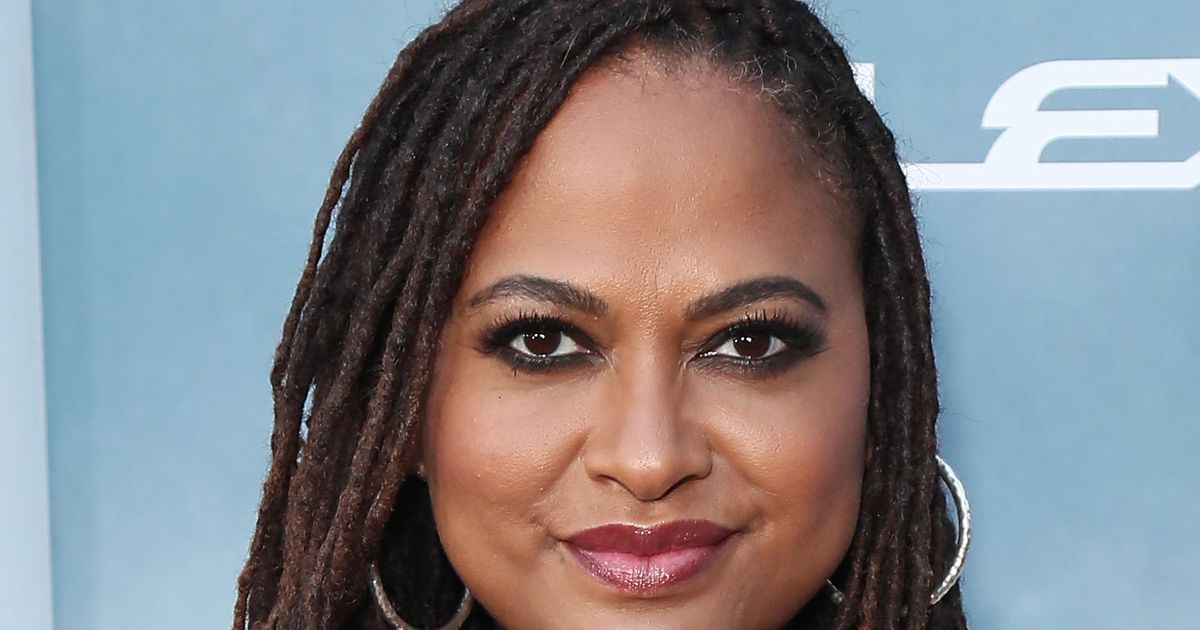
 www.vulture.com
www.vulture.com
By Charu Sinha
Photo: Leon Bennett/FilmMagic,
John E. Reid and Associates, the company that developed the police interrogation technique featured in a scene in Netflix’s When They See Us, is suing both Netflix and director Ava DuVernay for defamation. The contested scene is in the fourth episode of When They See Us, when NYPD detective Michael Sheehan is accused of coercing a confession out of a suspect in the Central Park Five case by using the Reid Technique. A character in the scene says, “The Reid Technique has been universally rejected.” John E. Reid and Associates takes issue with this characterization of the Reid Technique, which was originally developed by John E. Reid, a former Chicago police officer. They claim that the Reid Technique is neither coercive nor universally rejected. “Defendants published the statements in When They See Us in an effort to cause a condemnation of the Reid Technique,” reads the suit. The full suit can be read here.

Netflix and Ava DuVernay Sued Over When They See Us Scene
A police-training company is suing for defamation.
Netflix and Ava DuVernay Respond to When They See Us Lawsuit
By Charu Sinha
Photo: Theo Wargo/WireImage
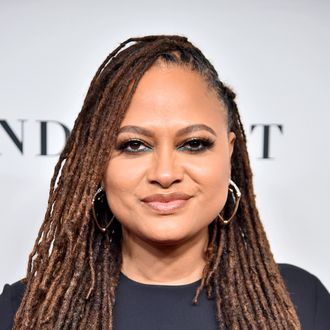
,
Netflix and Ava DuVernay have formally responded to a lawsuit over DuVernay’s series When They See Us. The lawsuit, filed by firm John E. Reid and Associates, claimed that a scene in When They See Us defamed an interrogation technique developed by the firm. In a Chicago district court filing, Netflix said the lawsuit is both unconstitutional and dangerous. “The dialogue at issue is fully protected speech under the First Amendment and is not actionable as a matter of law,” reads the filing. “Permitting this case to go forward would not only be contrary to law, it would have a profoundly chilling effect on core First Amendment speech.”
The dialogue in question is one line in a When They See Us scene, which depicts an investigator confronting a detective over the potentially coercive interrogation of a suspect. The investigator suspects that the detective has used the Reid Technique, and goes on to say that the technique has been “universally rejected.” John E. Reid and Associates specifically takes issue with the characterization of the technique as universally rejected. In the filing, Netflix notes that the dialogue was both a protected opinion under the First Amendment, as well as literary hyperbole. When They See Us centers around the case of the Central Park Five. The full suit against Netflix and DuVernay can be read here.
By Charu Sinha
Photo: Theo Wargo/WireImage
,
Netflix and Ava DuVernay have formally responded to a lawsuit over DuVernay’s series When They See Us. The lawsuit, filed by firm John E. Reid and Associates, claimed that a scene in When They See Us defamed an interrogation technique developed by the firm. In a Chicago district court filing, Netflix said the lawsuit is both unconstitutional and dangerous. “The dialogue at issue is fully protected speech under the First Amendment and is not actionable as a matter of law,” reads the filing. “Permitting this case to go forward would not only be contrary to law, it would have a profoundly chilling effect on core First Amendment speech.”
The dialogue in question is one line in a When They See Us scene, which depicts an investigator confronting a detective over the potentially coercive interrogation of a suspect. The investigator suspects that the detective has used the Reid Technique, and goes on to say that the technique has been “universally rejected.” John E. Reid and Associates specifically takes issue with the characterization of the technique as universally rejected. In the filing, Netflix notes that the dialogue was both a protected opinion under the First Amendment, as well as literary hyperbole. When They See Us centers around the case of the Central Park Five. The full suit against Netflix and DuVernay can be read here.
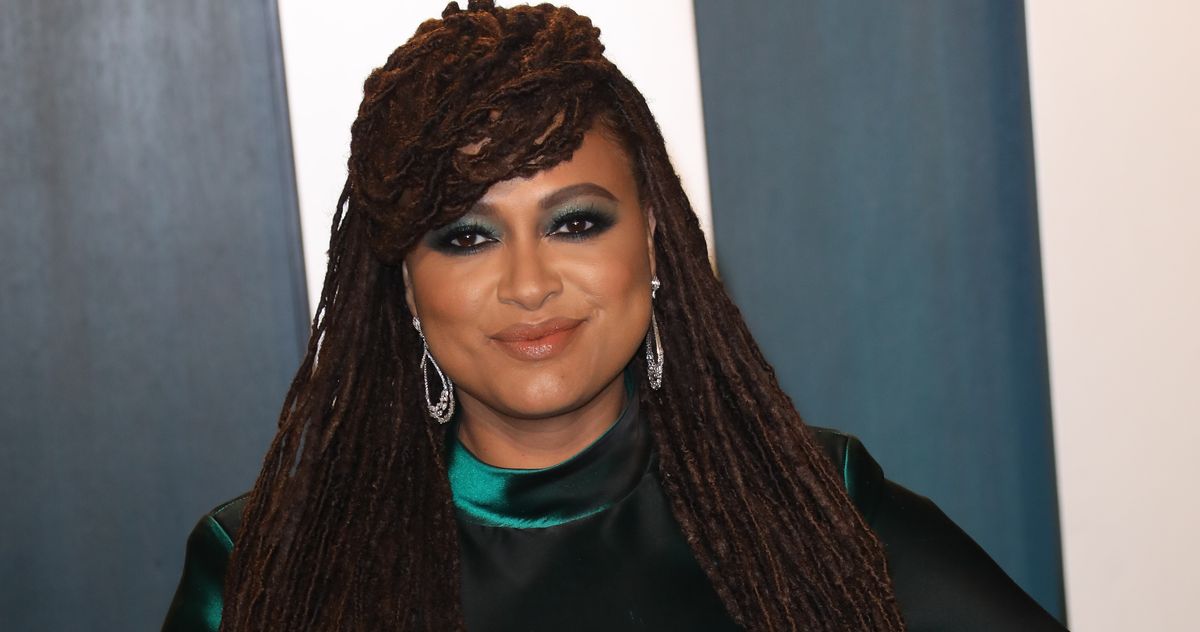
Ava DuVernay and Whoopi Goldberg Elected to The Academy’s Board of Governors
The number of female Academy governors increased from 25 to 26, and people of color increased from 11 to 12.

Ava DuVernay and Whoopi Goldberg Elected to The Academy’s Board of Governors
The number of female Academy governors increased from 25 to 26, and people of color increased from 11 to 12.

Ava DuVernay and Whoopi Goldberg Elected to The Academy’s Board of Governors
The number of female Academy governors increased from 25 to 26, and people of color increased from 11 to 12.
Ava DuVernay, Barry Jenkins Among 1,000 Black Artists for Freedom Demanding Change in Entertainment
Ava DuVernay, Barry Jenkins Among 1,000 Black Artists for Freedom Demanding Change in Entertainment By Halle Kiefer@hallekiefer Photo: Rebecca Sapp/Getty Images for SBIFF Ava DuVernay, Barry Jenkins, Lupita Nyong’o, John Legend, and Questlove are just a handful of the more than one thousand...
www.bgol.us
Ava DuVernay, Barry Jenkins Among 1,000 Black Artists for Freedom Demanding Change in Entertainment
By Halle Kiefer@hallekiefer
Photo: Rebecca Sapp/Getty Images for SBIFF
Ava DuVernay, Barry Jenkins, Lupita Nyong’o, John Legend, and Questlove are just a handful of the more than one thousand black directors, performers, artists, and writers demanding change in the arts, entertainment, and beyond in a call to action issued in honor of Juneteenth. In a statement made Friday, Black Artists for Freedom, “a collective of black workers in the culture industries,” called on creators to battle racial injustice in their fields. “Culture alone cannot fix systemic racism,” the letter reads. “But culture is strongly connected to racism’s material effects, and the violence against us.”
“Racist stereotypes of Black criminality, monstrosity, unchecked rage, hyper-sexuality, immunity to pain, and so on, are still recycled today in books, films, and on the Internet,” their statement explains. “Consciously and unconsciously, these stereotypes are invoked — in everyday interactions and in courts of law — as reasons why Black people do not deserve human rights. We do not wish merely to modify or alleviate this racist culture. We aim to eliminate it.”
So, how can creators prioritize anti-racism in their work? Good question, and Black Artists for Freedom provides five guidelines for achieving that goal: break ties with the police, spend money to recruit and support black workers, advocate for black people in leadership positions, educate yourself on the history of systemic racism, and, finally, “imagine Black freedom,” instead of relegating black creators to specific subjects or stereotypes. Read their statement, and its lengthy list of signees, in its entirety here.
Black Artists for Freedom
The Black Artists for Freedom is a collective of black workers in the culture industries. This is Our Juneteenth Artists' Statement.
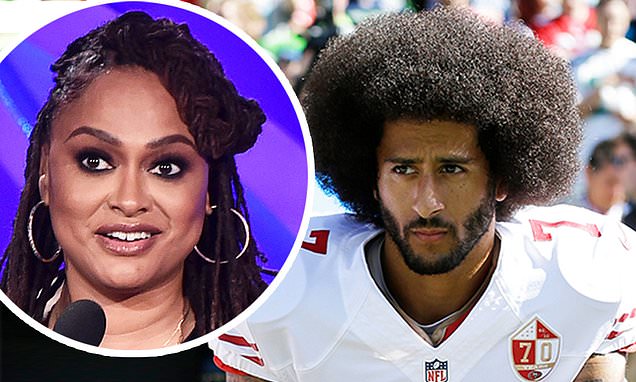
Colin Kaepernick and Ava DuVernay creating Netflix series
Colin Kaepernick, 32, is teaming up with filmmaker Ava DuVernay, 47, on a scripted drama series for Netflix about his early life, Colin in Black & White, the streaming network announced on Monday.
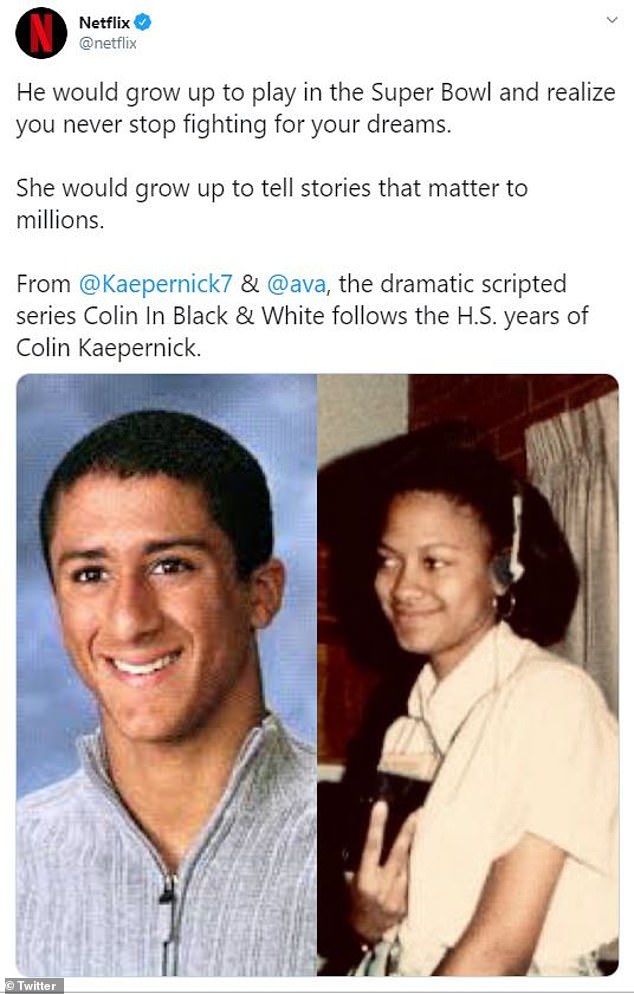
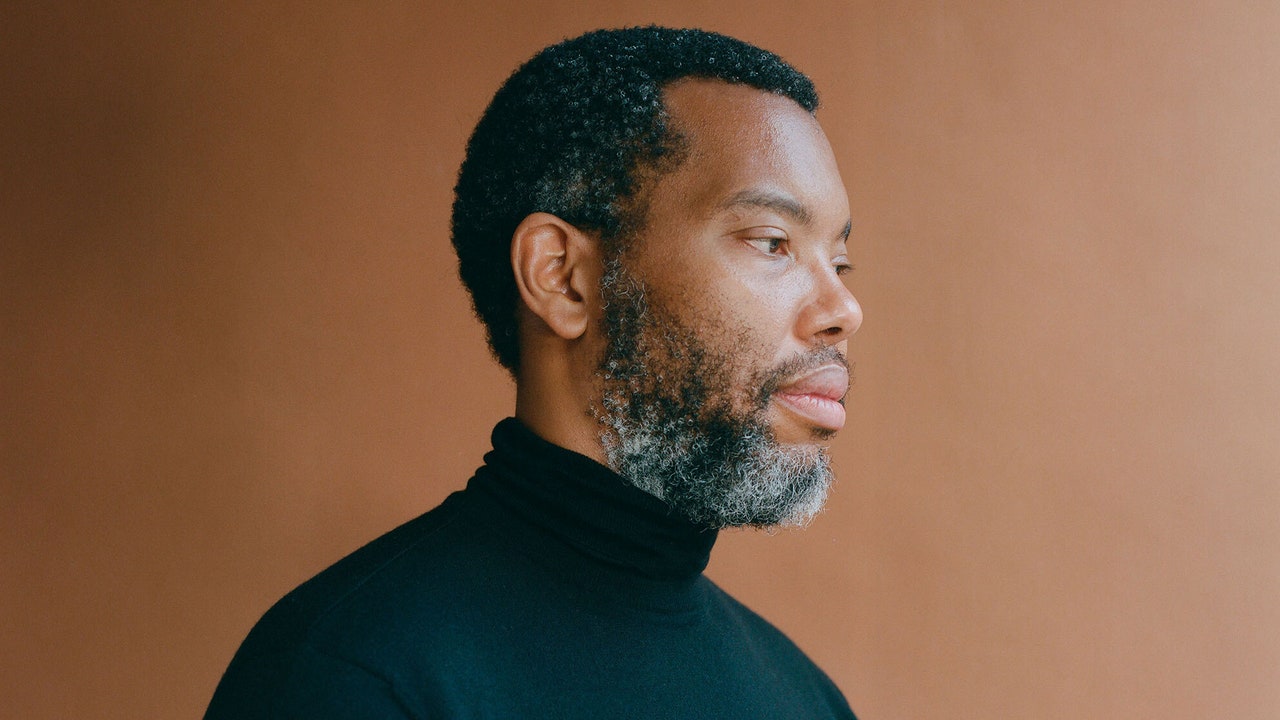
Ta-Nehisi Coates to Guest-Edit the September Issue of Vanity Fair
Eve L. Ewing, Bomani Jones, Ava DuVernay, Josie Duffy Rice, Jesmyn Ward, and others will contribute to the special issue. Byline: By Vanity Fair
Ta-Nehisi Coates to Guest-Edit the September Issue of Vanity Fair
Eve L. Ewing, Bomani Jones, Ava DuVernay, Josie Duffy Rice, Jesmyn Ward, and others will contribute to the special issue.
BY VANITY FAIR
AUGUST 4, 2020
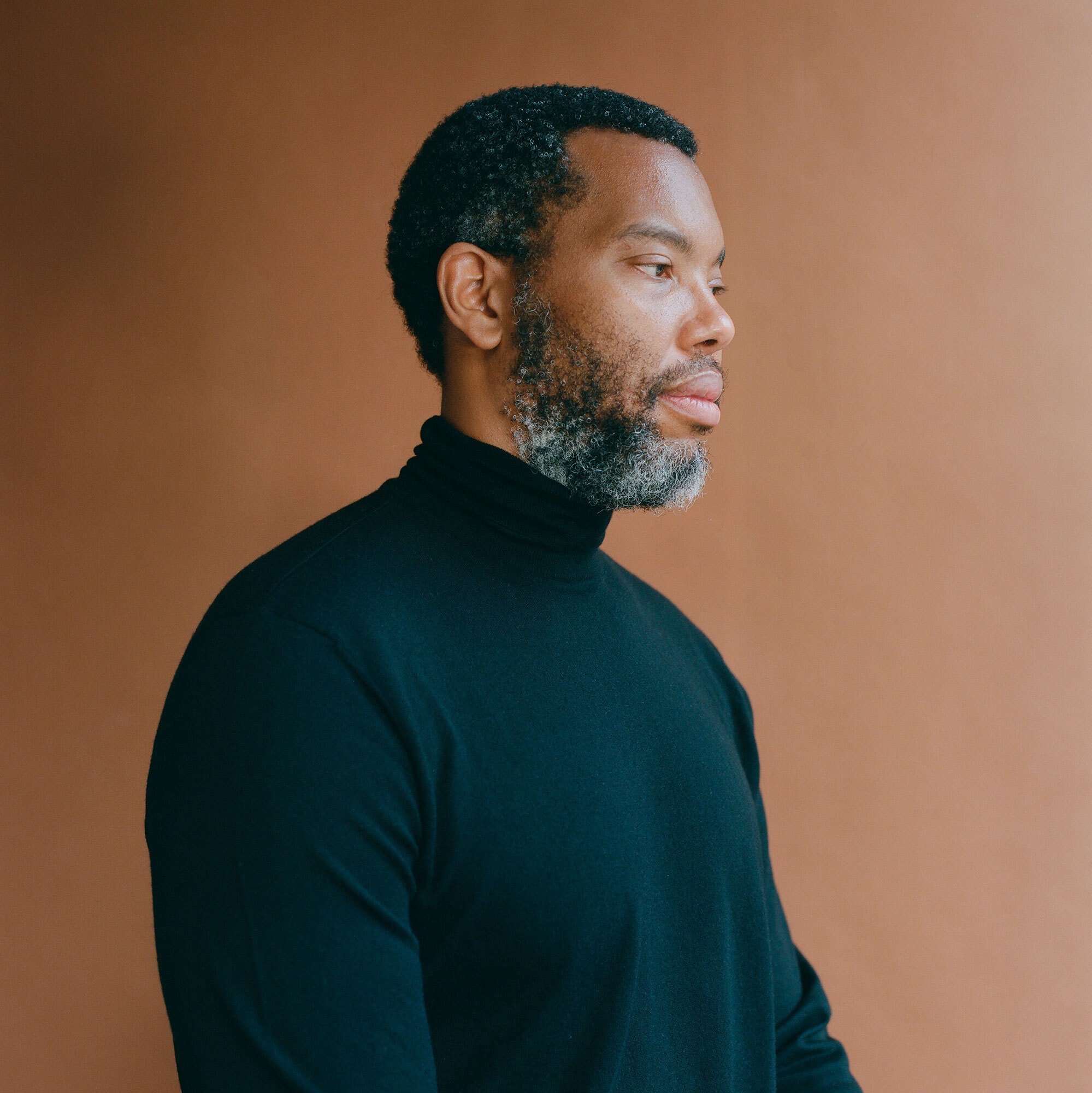
Vanity Fair editor in chief Radhika Jones announced today that Ta-Nehisi Coates is serving as guest editor for the September issue, a special edition exploring art, activism, and power in 21st-century America.
New subscribers can secure their copy by visiting this link.
“There’s no one better suited than Ta-Nehisi to illuminate this urgent moment in American history—to answer the question, why is this time different?” said Jones. “We are honored to collaborate with him on this project, bringing together the writers, artists, and icons whose work pushes us toward a more just world.”
Coates, a renowned journalist and writer, is an essential voice on subjects of history and American culture. He is the best-selling author of The Beautiful Struggle, We Were Eight Years in Power, Between the World and Me, and The Water Dancer. He is also the current author of the Marvel comics Black Panther and Captain America.
“I’m honored to be partnering with Radhika and the entire Vanity Fair staff on this project,” said Coates. “Equally, I’m humbled that so many of this country’s best writers and artists have agreed to participate. The moment is too big for any one of us to address alone.”
Working closely with the editorial and creative teams, Coates is helping oversee almost every aspect of the magazine’s production, including story assigning and editing, writer and photographer selection, art direction, design, display, and multimedia projects.
In addition to Coates, the September issue features more than 40 prominent writers, artists, and photographers, including Eve L. Ewing, Bomani Jones, Ava DuVernay, Josie Duffy Rice, Jesmyn Ward, Danez Smith, Deana Lawson, LaToya Ruby Frazier, Kiese Makeba Laymon, Jacqueline Woodson, Franklin Leonard, Kimberly Drew, Hank Willis Thomas, Diana Ejaita, Marjon Carlos, Zerina Akers, Ruth Ossai, Shawn Martinbrough, Ola Ebiti, Calida Rawles, Renell Medrano, Lynsey Weatherspoon, Jason Bolden, Dana Scruggs, Phylicia J. L. Munn, Levi Walton, Lawrence Agyei, Braylen Dion, Bruce Bennett, Paul Octavious, Shan Wallace, Djeneba Aduayom, Wulf Bradley, Miranda Barnes, Arielle Bobb-Willis, Sophia Wilson, Erik Carter, Kennedi Carter, Myles Loftin, Quil Lemons, Adrienne Raquel, Andrea Ellen Reed, John Edmonds, Otis Kwame Kye Quaicoe, and Monica Ahanonu.
The September issue of Vanity Fair hits newsstands September 1. For at-home delivery of Vanity Fair, starting with this special edition, subscribe at this link no later than September 9.
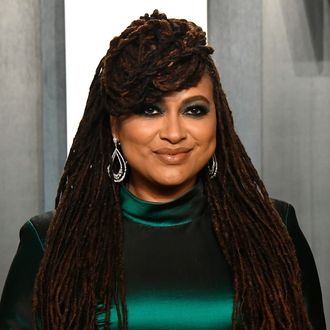
Ava DuVernay Is Creating an HBO Max Show Based on the One Perfect Shot Twitter Account
By Halle Kiefer@hallekiefer
Photo: Frazer Harrison/Getty Images
One perfect shot can convey so much, but a half-hour unscripted docuseries episode about that same shot? It can probably fit a few more details in there. On Friday, When They See Us creator Ava DuVernay and HBO Max announced the upcoming show One Perfect Shot, based on the popular Twitter account of the same name.
Launched by filmmaker Geoff Todd in 2013, and now a part of Film School Rejects under Neil Miller, One Perfect Shot offers Twitter’s cinephiles a steady stream of iconic cinematic images. In series form, One Perfect Shot will, according to HBO Max, feature one director per episode breaking down one of their own shots, courtesy of “an arsenal of visual tools” and “state of the art technology,” allowing the directors to “literally enter each shot, walking through the scene in 360 moments that allow viewers to join an immersive exploration of moviemaking.” Each filmmaker will also present a shot from one of their moviemaking forerunners that has informed their work.
DuVernay will executive produce, alongside Miller and Lee Metzger, as well as narrate the show. “When you get to make a TV series about that Twitter account that you love. That’s me today. Gonna be a fun ride with @OnePerfectShot,” the Wrinkle in Time director tweeted Friday. “Wait until you see the filmmakers break down their shots like you’ve never seen before. I mean …”
Ava DuVernay to Adapt Isabel Wilkerson’s Caste: The Origins of Our Discontents
By Zoe Haylock@zoe_alliyah
Ava DuVernay reunites with Netflix for her next feature. Photo: Taylor Hill/FilmMagic
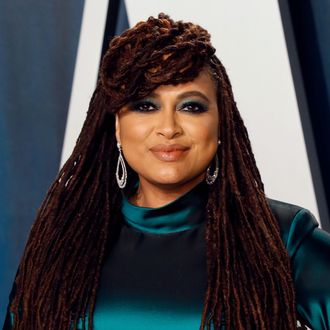
Just two months after being published, being named an Oprah’s Book Club selection, and landing on the New York Times Best Sellers List, Isabel Wilkerson’s Caste: The Origins of Our Discontents will be adapted by Ava DuVernay for Netflix. DuVernay will direct, write, and produce the film, her first feature for the streamer. She had previously teamed with Netflix for The 13th, her Oscar-nominated documentary on the prison-industrial complex, and most recently earned 16 Emmy nominations for the limited series When They See Us, which chronicled the case of the now–Exonerated Five, Black men who were falsely convicted of rape by a racist and unjust system as teens. Across multiple real-life stories, Caste examines how the country has been defined by human divisions throughout its history. Pulitzer Prize winner Isabel Wilkerson came to the idea while researching her 2010 book, The Warmth of Other Suns, an instant best seller about the migration of African Americans from the South in the 20th century. DuVernay is currently working on Colin in Black & White, a Netflix miniseries about the life of another history-maker, Colin Kaepernick.
By Zoe Haylock@zoe_alliyah
Ava DuVernay reunites with Netflix for her next feature. Photo: Taylor Hill/FilmMagic

Just two months after being published, being named an Oprah’s Book Club selection, and landing on the New York Times Best Sellers List, Isabel Wilkerson’s Caste: The Origins of Our Discontents will be adapted by Ava DuVernay for Netflix. DuVernay will direct, write, and produce the film, her first feature for the streamer. She had previously teamed with Netflix for The 13th, her Oscar-nominated documentary on the prison-industrial complex, and most recently earned 16 Emmy nominations for the limited series When They See Us, which chronicled the case of the now–Exonerated Five, Black men who were falsely convicted of rape by a racist and unjust system as teens. Across multiple real-life stories, Caste examines how the country has been defined by human divisions throughout its history. Pulitzer Prize winner Isabel Wilkerson came to the idea while researching her 2010 book, The Warmth of Other Suns, an instant best seller about the migration of African Americans from the South in the 20th century. DuVernay is currently working on Colin in Black & White, a Netflix miniseries about the life of another history-maker, Colin Kaepernick.
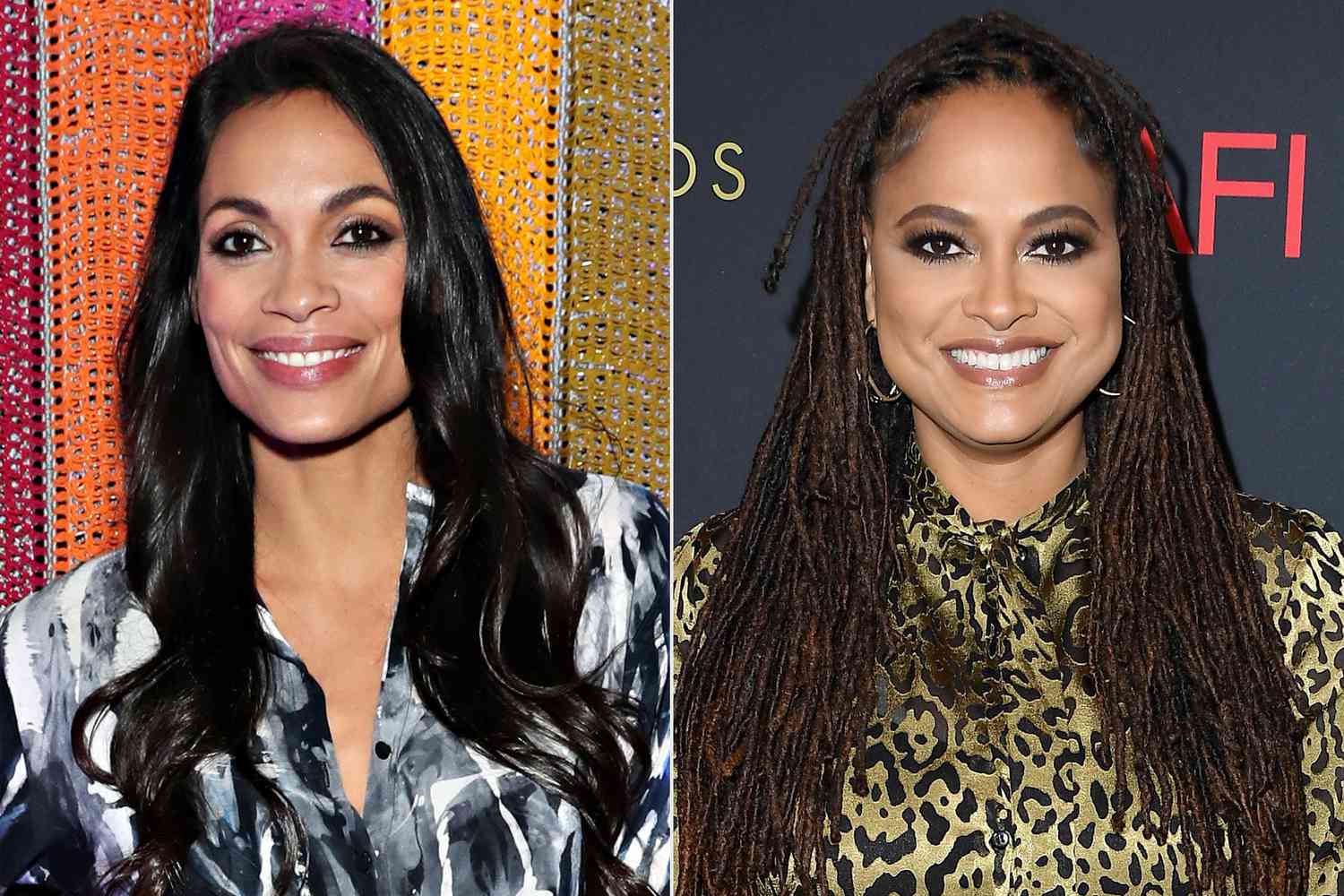
Rosario Dawson and Ava DuVernay team up for 'DMZ' adaptation on HBO Max
The series is set in a near-future America torn apart by a second American civil war.
Rosario Dawson, Ava DuVernay team up for DMZ comic adaptation on HBO Max
The series is set in a near-future America torn apart by a second American civil war.
By Christian Holub
November 19, 2020 at 01:20 PM EST
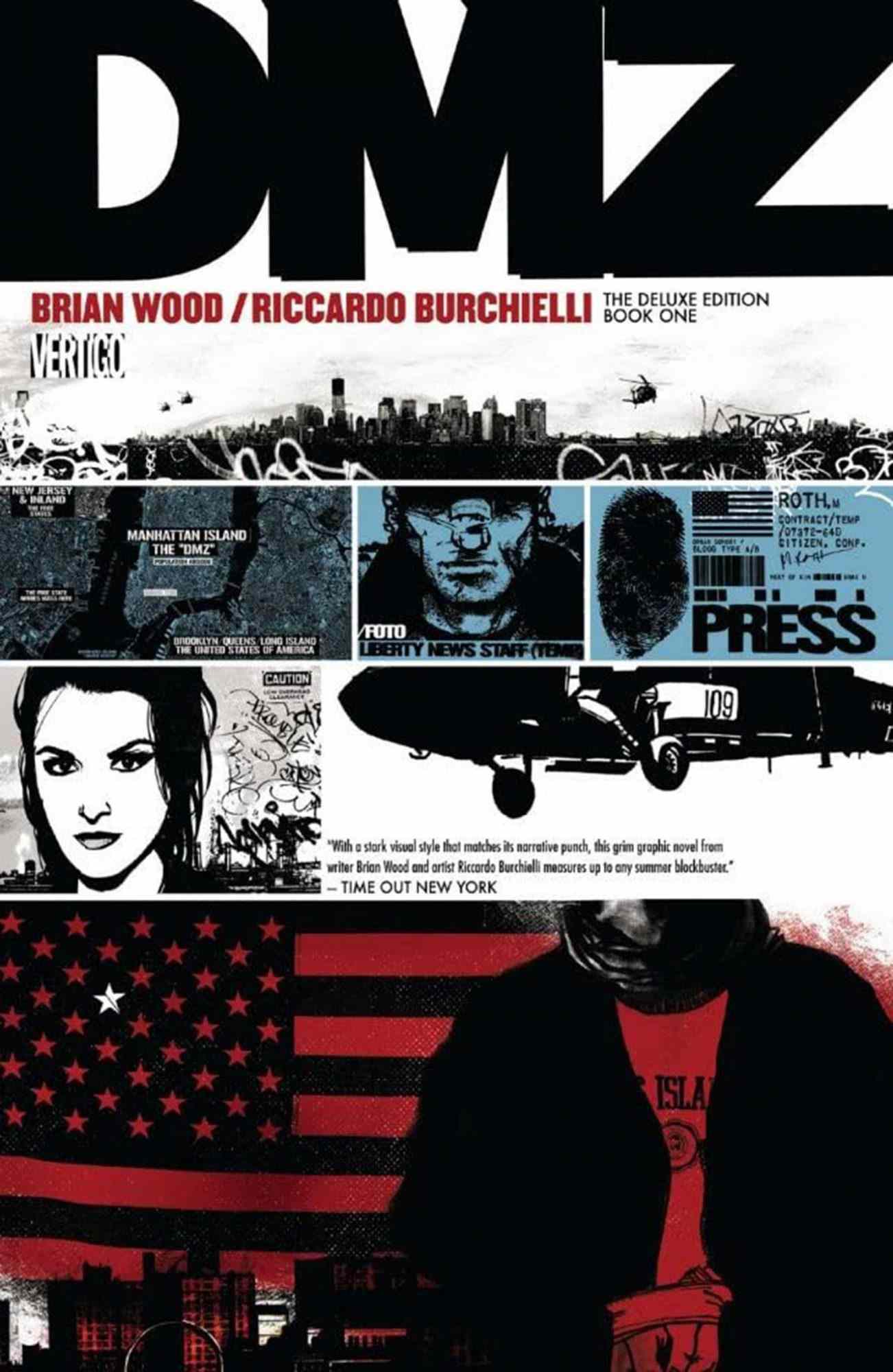
Is America ready for a second civil war? Although President Donald Trump continues to dispute his electoral loss from earlier this month, it does not seem like forces are arrayed for an armed partisan conflict anytime soon. But just in case you were wondering what such a thing might look like if it did happen, Ava DuVernay has a new show for you.
On Thursday, HBO Max and Warner Bros Television announced that DuVernay and Roberto Patino will be producing a limited event series called DMZ, based on the DC/Vertigo comic of the same name. Set in a near-future America embroiled in a bitter civil war, the titular DMZ refers to Manhattan itself, which has indeed become a demilitarized zone devastated and isolated from the rest of the world.
CREDIT: CINDY ORD/GETTY IMAGES; STEVE GRANITZ/WIREIMAGE
Rosario Dawson stars as Alma Ortega, a fearless and fierce medic who sets out on a harrowing journey to find the son she lost when New York City was evacuated at the beginning of the conflict. That conflict is being exacerbated and exploited by the likes of Parco Delgado (Benjamin Bratt), the popular and deadly leader of one of the DMZ's most powerful gangs. As Alma contends with gangs, militias, demagogues, and warlords in this lawless no man's land, DMZ aims to explore "a stark political and cultural divide in American society."
In addition to Dawson and Bratt, DMZ also stars include Hoon Lee (Banshee), Freddy Miyares (When They See Us), and Jordan Preston Carter (The Haves and the Have Nots).

“’DMZ’s’ unflinching story of a country torn apart resonates eerily and profoundly amid our current state of the union,” HBO Max's head of original content Sarah Aubrey said in a statement. “With the powerhouse visionary team of Ava and Roberto at the helm, bringing this critically acclaimed DC gem to life promises to entertain and inspire hope.”
While sharing the same concept and several characters, it seems that this DMZ will differ from its source material in some ways. The comic series was originally written by Brian Wood and illustrated by Wood and Riccardo Burchielli. Wood has been accused of sexual misconduct by multiple women over the years, and EW has confirmed that he has no involvement in this adaptation. Journalist Matty Roth, one of the primary protagonists of the comic, is not mentioned in the announcement either, although the character could still appear.
Ava DuVernay Adapting Brian Michael Bendis' Naomi Into CW Series
Brian Michael Bendis, David F. Walker and Jamal Campbell's Naomi DC Comics series is being developed into a CW television series by Ava DuVernay.
BY TIM ADAMS2 HOURS AGO
Director Ava DuVernay is adapting DC Comics' Naomi into a live-action television series for The CW. Naomi was created by writers Brian Michael Bendis and David F. Walker, and artist Jamal Campbell.
According to Deadline, DuVernay will write and executive produce the Naomi project alongside Arrow writer and co-executive producer Jill Blankenship. The series is described as following "a teen girl's journey from her small northwestern town to the heights of the multiverse. When a supernatural event shakes her hometown to the core, Naomi sets out to uncover its origins, and what she discovers will challenge everything we believe about our heroes."
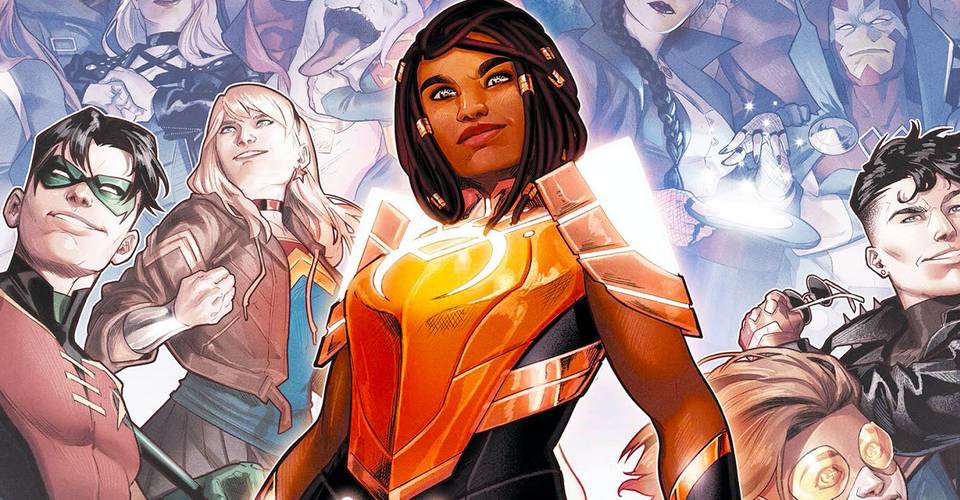
RELATED:Superman & Lois Reveals First Five Episode Titles
A Naomi series would join upcoming DC projects based on DC Comics properties such as Painkiller, a spinoff of Black Lightning, which is set to conclude with its fourth season, and Wonder Girl, the publisher's first post-Future State comic series.
Naomi was one of the first titles to launch under Bendis' Wonder Comics imprint, which also saw the relaunch of the fan-favorite Young Justice comic. A brief encounter with Superman in her small town of Port Oswego, Oregon sent Naomi on her origin story. Throughout her miniseries, Naomi learned her parents came from another Earth in the DC Multiverse, and also discovered she has extraordinary powers. Naomi eventually joined Young Justice and is set to have a second volume of her self-titled comic by Bendis, Walker and Campbell at some point in the future.
Brian Michael Bendis, David F. Walker and Jamal Campbell's Naomi DC Comics series is being developed into a CW television series by Ava DuVernay.
BY TIM ADAMS2 HOURS AGO
Director Ava DuVernay is adapting DC Comics' Naomi into a live-action television series for The CW. Naomi was created by writers Brian Michael Bendis and David F. Walker, and artist Jamal Campbell.
According to Deadline, DuVernay will write and executive produce the Naomi project alongside Arrow writer and co-executive producer Jill Blankenship. The series is described as following "a teen girl's journey from her small northwestern town to the heights of the multiverse. When a supernatural event shakes her hometown to the core, Naomi sets out to uncover its origins, and what she discovers will challenge everything we believe about our heroes."

RELATED:Superman & Lois Reveals First Five Episode Titles
A Naomi series would join upcoming DC projects based on DC Comics properties such as Painkiller, a spinoff of Black Lightning, which is set to conclude with its fourth season, and Wonder Girl, the publisher's first post-Future State comic series.
Naomi was one of the first titles to launch under Bendis' Wonder Comics imprint, which also saw the relaunch of the fan-favorite Young Justice comic. A brief encounter with Superman in her small town of Port Oswego, Oregon sent Naomi on her origin story. Throughout her miniseries, Naomi learned her parents came from another Earth in the DC Multiverse, and also discovered she has extraordinary powers. Naomi eventually joined Young Justice and is set to have a second volume of her self-titled comic by Bendis, Walker and Campbell at some point in the future.
Ava DuVernay is making an animated Netflix series based on the Wings of Fire kids books
This marks the filmmaker's first animated project.
By Nick Romano
April 20, 2021 at 11:00 AM EDT
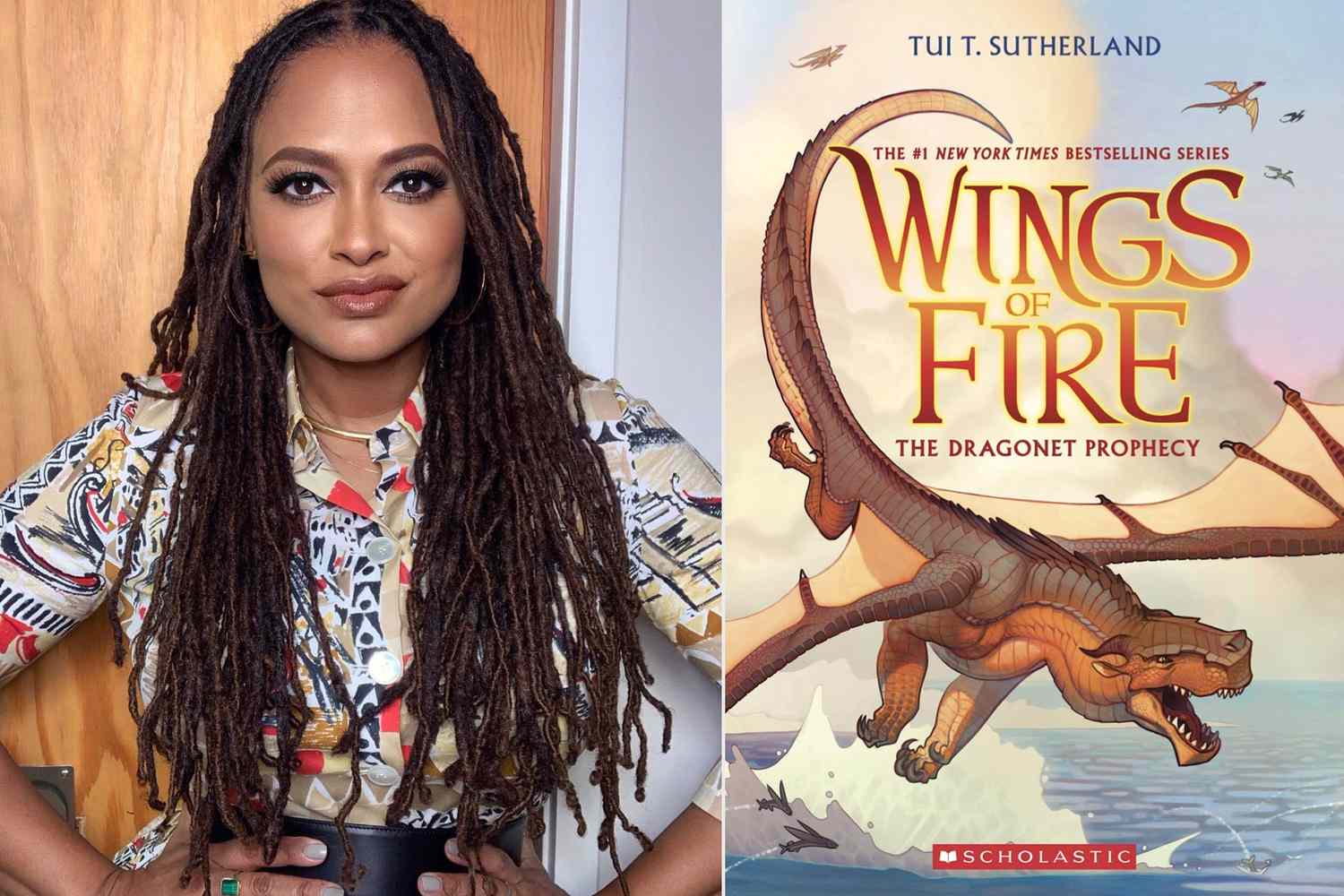
Now that her New Gods movie for Warner Bros. has fallen through, Ava DuVernay is focusing on her first animated project.
The Wrinkle in Time director and When They See Us creator is turning the popular Wings of Fire fantasy kids books into a 10-episode event series for Netflix.
Series author Tui T. Sutherland announced the news in a blog post for the streaming service. "'Will there ever be a TV show?' has been the No. 1 question I've gotten at events almost from the beginning, and the answer is finally yes!" she wrote.
"Not just 'yes,' but 'yes, AND I cannot believe the amazing team who are going to make this so great.' I am so immensely thrilled and grateful that Ava DuVernay is our Queen of Dragons (I'm pretty sure that's the official title)," Sutherland continued. "Ava is someone who saves the world every day without waiting for any prophecy to tell her what to do. I hope some of my dragons grow up to be just like her!"
Wings of Fire is set in the world of Pyrrhia where a bitter war between dragon tribes has waged for generations. Five young dragons are prophesied to bring peace to the land — Clay, Tsunami, Glory, Starflight, and Sunny — otherwise known as the Dragonets of destiny.
Ava DuVernay to adapt 'Wings of Fire' books.
| CREDIT: NETFLIX; SCHOLASTIC
"Within this epic book series from the mind of Tui Sutherland is an elegant saga filled with wisdom and wonder, exploring ideas of belonging and bias, camaraderie and community," DuVernay said in a statement. "On behalf of my colleagues Sarah Bremner and Paul Garnes of ARRAY Filmworks, we're thrilled to partner with Netflix and Warner Bros. Animation for this dynamic adaptation where five young dragonets fulfill their destiny and show viewers how to fulfill their own."
Dan Milano (Glitch Techs) and Christa Starr (Mystery Science Theater 3000) are adapting the books for the screen, and they'll serve as showrunners on the show with Justin Ridge (Star Wars Resistance). DuVernay will executive produce alongside Sutherland, Sam Register, and Bremner.
DuVernay was previously set to adapt the New Gods DC comics into a feature film with comic book writer Tom King, but the project was canceled at Warner Bros.
"Tom, I loved writing NEW GODS with you. I'm upset that the saga of Barda, Scott, Granny, Highfather and The Furies ends this way," she tweeted at the time. "Diving into Kirby's Fourth World was the adventure of a lifetime. That can't be taken away. Thank you for your friendship. And remember… #DarkseidIs."
She's still sticking with the WB — well, WB Animation — for Wings of Fire as Netflix continues to develop a massive slate of animated projects. The streamer is adding at least 40 new anime titles alone in 2021, but they have a number of other animated titles in the works, including big plans for the Redwall children's books.
This marks the filmmaker's first animated project.
By Nick Romano
April 20, 2021 at 11:00 AM EDT

Now that her New Gods movie for Warner Bros. has fallen through, Ava DuVernay is focusing on her first animated project.
The Wrinkle in Time director and When They See Us creator is turning the popular Wings of Fire fantasy kids books into a 10-episode event series for Netflix.
Series author Tui T. Sutherland announced the news in a blog post for the streaming service. "'Will there ever be a TV show?' has been the No. 1 question I've gotten at events almost from the beginning, and the answer is finally yes!" she wrote.
"Not just 'yes,' but 'yes, AND I cannot believe the amazing team who are going to make this so great.' I am so immensely thrilled and grateful that Ava DuVernay is our Queen of Dragons (I'm pretty sure that's the official title)," Sutherland continued. "Ava is someone who saves the world every day without waiting for any prophecy to tell her what to do. I hope some of my dragons grow up to be just like her!"
Wings of Fire is set in the world of Pyrrhia where a bitter war between dragon tribes has waged for generations. Five young dragons are prophesied to bring peace to the land — Clay, Tsunami, Glory, Starflight, and Sunny — otherwise known as the Dragonets of destiny.
Ava DuVernay to adapt 'Wings of Fire' books.
| CREDIT: NETFLIX; SCHOLASTIC
"Within this epic book series from the mind of Tui Sutherland is an elegant saga filled with wisdom and wonder, exploring ideas of belonging and bias, camaraderie and community," DuVernay said in a statement. "On behalf of my colleagues Sarah Bremner and Paul Garnes of ARRAY Filmworks, we're thrilled to partner with Netflix and Warner Bros. Animation for this dynamic adaptation where five young dragonets fulfill their destiny and show viewers how to fulfill their own."
Dan Milano (Glitch Techs) and Christa Starr (Mystery Science Theater 3000) are adapting the books for the screen, and they'll serve as showrunners on the show with Justin Ridge (Star Wars Resistance). DuVernay will executive produce alongside Sutherland, Sam Register, and Bremner.
DuVernay was previously set to adapt the New Gods DC comics into a feature film with comic book writer Tom King, but the project was canceled at Warner Bros.
"Tom, I loved writing NEW GODS with you. I'm upset that the saga of Barda, Scott, Granny, Highfather and The Furies ends this way," she tweeted at the time. "Diving into Kirby's Fourth World was the adventure of a lifetime. That can't be taken away. Thank you for your friendship. And remember… #DarkseidIs."
She's still sticking with the WB — well, WB Animation — for Wings of Fire as Netflix continues to develop a massive slate of animated projects. The streamer is adding at least 40 new anime titles alone in 2021, but they have a number of other animated titles in the works, including big plans for the Redwall children's books.



